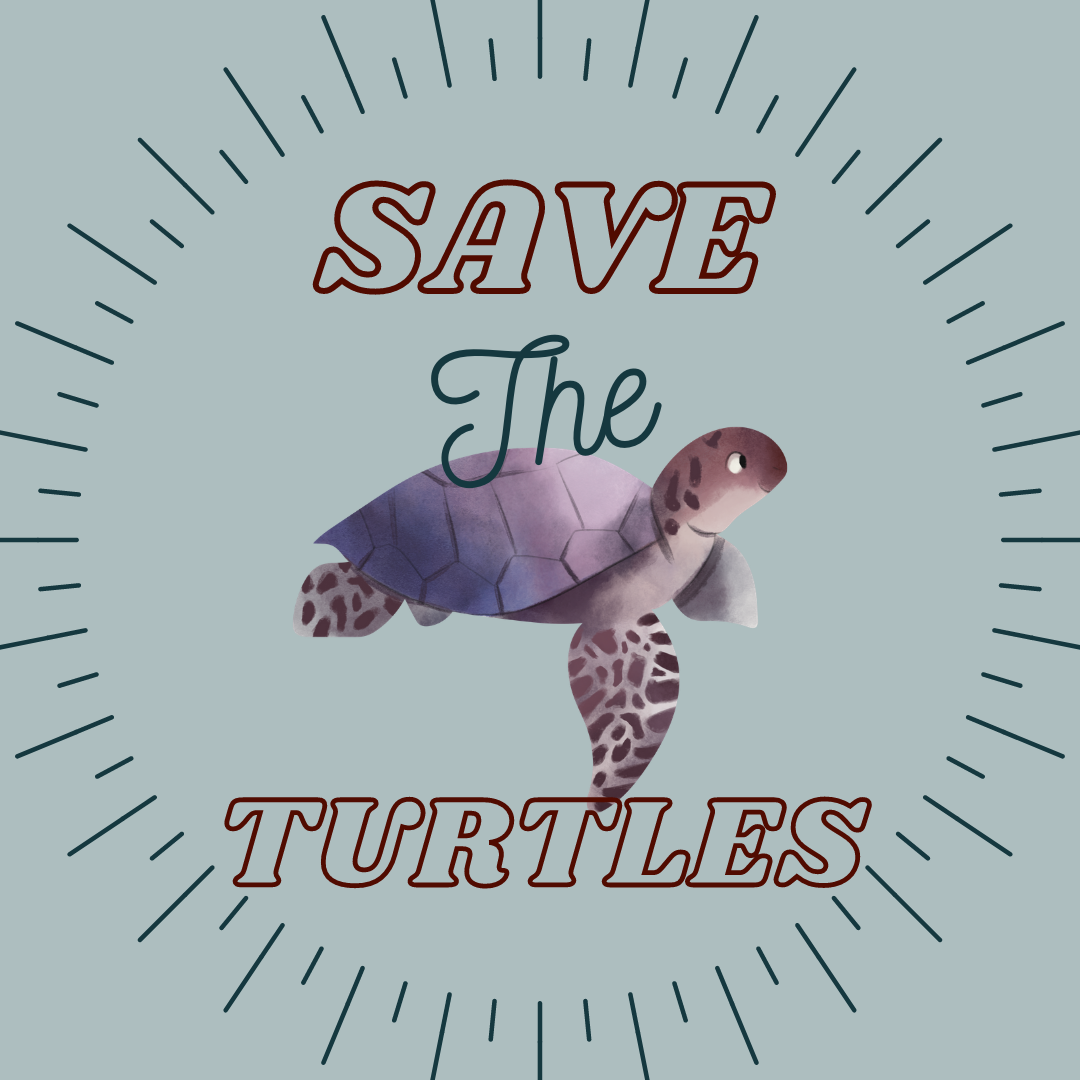How We Can Save Sea Turtles
By: Serenity Lopez
Graphic by: Giselle Martinez
People go to the beach everyday, whether that be to tan, swim, surf or just to hangout; we all have noticed one thing: why is there so much plastic in the ocean? How does plastic get into the ocean, and why is plastic in the ocean so horrible?
Plastic gets into the ocean from littering or from trash cans that get blown into the ocean or sewers, also known as marine debris. Plastics in the ocean conveys,
“Every year, 8 million metric tons of plastics enter our ocean on top of the estimated 150 million metric tons that currently circulate our marine environments.”
We can help by signing a pledge and taking action at takeaction.ocean conservancy.org.
Plastic in the ocean is detrimental to many forms of sea life including sea turtles. Sea turtles mistakenly consume plastic which can rupture internal organs and can cause intestinal blockage, leading to them not being able to eat and leading to starvation. Melissa Lipponen expresses in, How can we help save sea turtles from plastic pollution,
“Researchers estimate that over half of all sea turtles in the world have ingested plastic, and a single piece of plastic has a 20% chance of killing them.”
We need to think smart and save sea turtles from plastic by switching to paper, or another alternative rather than plastic. We can also volunteer for coastal clean ups, signing petitions to take matters into our own hands and limit littering to those who do. I would love to go into the water and see it being clear, while knowing we have done our part to save sea turtles from plastic.
On the other hand, the opposing reader would say paper is just as bad for the Earth because of the climate and trees. I understand that paper can be bad as well for our climate and renewable resources. Paper Versus Plastic states,
“Paper is typically made from trees, though very occasionally from materials like straw or hemp. Trees are a renewable resource, which is 'good.' However, renewable isn’t a great thing if the paper is coming from global deforestation - one of the major contributors to climate change and loss of wildlife habitat.”
Just as straws affect sea turtles, paper can indeed affect our impact on the environment as well. A useful, but wasteful product expresses,
“Most of the materials in landfills are made of paper. When paper rots it emits methane, a greenhouse gas. When it is burned or composted, carbon dioxide,” which can be bad for our health and climate.
Although paper can be bad, it isn't as bad as plastic. I stand with switching to paper.
Again with, How can we help save sea turtles from plastic pollution states:
“Researchers estimate that over half of all sea turtles in the world have ingested plastic, and a single piece of plastic has a 20% chance of killing them."
We need to think smart and save sea turtles from plastic, justifying three examples on why we need sea turtles:
Critically endangered hawksbill turtle protects coral reefs by grazing on sponges that would otherwise outgrow the corals. If sponges were left to grow unchecked, they would cover the corals and kill the reef, endangered green turtles graze on seagrass beds, which promotes healthier and faster seabed growth.
Seagrass beds are homes, nurseries and feeding grounds to many species of fish and other marine animals, and also vulnerable leatherback turtle’s main food source is jellyfish. Jellyfish eat larval fish and if they are left unchecked, jellyfish will reduce the population of fish in the ocean. Fish populations are already under heavy stress from overfishing and pollution; having to battle yet another threat puts immense pressure on the ecosystem, which is in danger of collapsing.
Why would we want to continue harming our gentle sea turtles that help us in the ocean? To protect sea turtles I think it is a great idea to do a coastal clean up and also use reusable water bottles. When asking for straws consider asking if they provide paper straws or use none at all.
What Can You Do to Save Sea Turtles offers great tips to help sea turtles' environment and habitat from not getting destroyed by explaining,
“Keep nesting beaches dark and safe for sea turtles. Turn off, shield, or redirect lights visible from the beach. Lights disorient hatchling sea turtles and discourage nesting females from coming onto the beach to lay their eggs.”
I think many of us don't understand how to protect and do what is right for turtles, so I think it is great that there are tips and tricks for us. How can it be so hard to not litter, or switch to paper to help our sea creatures? Wouldn't you rather live a clean, healthy life instead of living in a constant messy environment?
If we can limit littering and do our part, over time plastic can decrease in the ocean. It is your time to make the ocean a safer place, please take the chance to sign a petition at thepetitionsite.com/save-sea-turtles.org. This is your choice, let us save the sea turtles together.
Please consider this petition as well: https://www.change.org/p/noaa-save-the-sea-turtles

